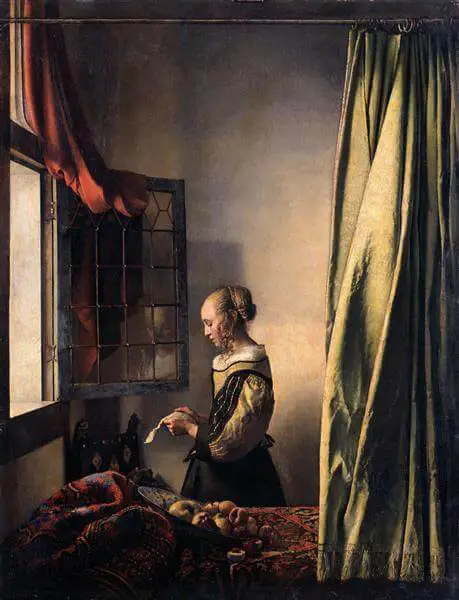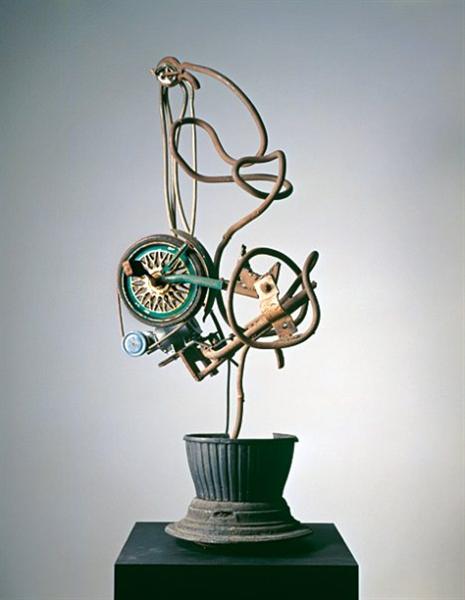Title of Artwork: “Girl Reading a Letter at an Open Window”

Artwork by Johannes Vermeer
Year Created 1657
Summary of Girl Reading a Letter at an Open Window
Johannes Vermeer, a painter from the Dutch Golden Age, created an oil painting called “Girl Reading a Letter at an Open Window.” The painting, which was finished around 1657-59, is currently exhibited at the Gemäldegalerie in Dresden and is in good condition. The painting of a young Dutch woman reading a letter by an open window was mistakenly credited to Rembrandt and Pieter de Hooch before it was correctly identified in 1880. The true artist was unknown for many years. The painting was briefly owned by the Soviet Union after World War II.
All About Girl Reading a Letter at an Open Window
The artwork shows a young girl from the Netherlands with blonde hair standing by an open window. She is seen from the side and is reading a letter. A red cloth is hanging over the window, and the window is open and reflecting her in the lower right corner. In the room where she is standing, there is a partially closed yellowish-brown curtain with tassels in the front right corner that covers a part of the room. The hue of the cloth mirrors the green of the lady’s dress and the tones of the fruit slanted in a bowl on the table draped in red. Next to the bowl, there is a halved peach with its pit visible.
According to Norbert Schneider’s book Vermeer, 1632-1675 (2000), the open window in the painting represents the woman’s desire to expand her domestic life beyond her home and society. The fruit in the painting is a symbol of relationships outside of marriage. He comes to the conclusion that the letter is a love letter, possibly discussing or continuing her forbidden relationship. According to him, the conclusion is backed up by x-ray evidence of the canvas, which indicates that Vermeer had previously included a Cupid in the artwork. Vermeer covered up this putto that used to be in the upper right of the artwork for some unknown reason.
Vermeer included draperies in seven of his paintings, and they can be seen in the right foreground of this painting. The repoussoir is frequently used in art, including in Girl Reading a Letter at an Open Window, which is one of three paintings that have a rug-covered table or balustrade separating the figure from the viewer. Vermeer used this device for the final time in the last painting.
Vermeer’s painting, Officer and Laughing Girl, is one of the first examples of the pointillé technique, which he later became famous for. It’s important to note that pointillé is not the same as pointillism. In his book Vermeer and His Milieu (1991), John Michael Montias mentions the small white dots that are visible in the brighter areas of both paintings. These dots can be seen in the still life objects and the blonde hair in this particular painting. Art historians have speculated that Vermeer may have used a mechanical optical device, like a double concave lens in a camera obscura, to create realistic light patterns in his paintings. This use of light supports their theory.
The artwork was finished by Vermeer around 1657-59. Augustus III of Poland, who was also the Elector of Saxony, bought the painting in 1742. He thought it was painted by Rembrandt, but he was wrong. Pieter de Hooch was mistakenly credited with it once more in 1826. In 1860, a French art critic named Théophile Thoré-Bürger found a painting and correctly identified it as a rare work by a Dutch painter. He gave it the correct name.
Information Citations
En.wikipedia.org, https://en.wikipedia.org/.
























